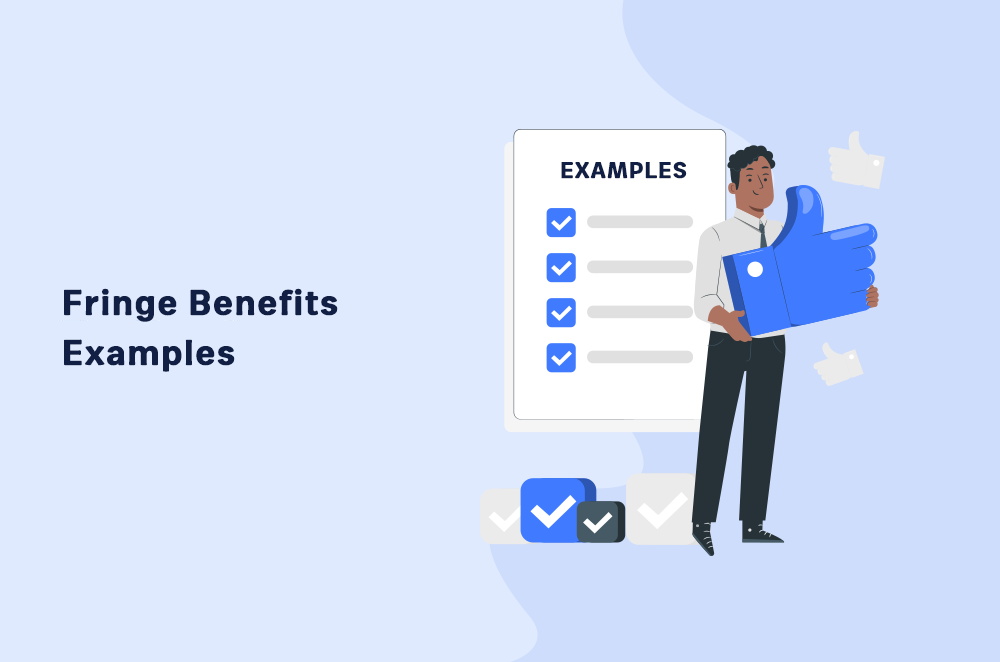Examples of Fringe Benefits
In this article, we will explore various examples of fringe benefits that companies offer to their employees. Fringe benefits are additional perks and advantages provided by employers, alongside regular salary or wages. These benefits can significantly improve employee satisfaction, engagement, and overall well-being. By understanding different types of fringe benefits, employers can create attractive compensation packages that help them attract and retain top talent in the competitive job market.
Healthcare Benefits
One of the most common examples of fringe benefits is healthcare coverage. Many companies provide comprehensive health insurance plans to their employees, which cover medical, dental, and vision expenses. These benefits not only ensure that employees receive necessary healthcare services but also provide financial security by reducing out-of-pocket expenses.
Retirement Benefits
Retirement benefits are another crucial aspect of fringe benefits. Employers may offer retirement plans such as 401(k) or pension schemes, where employees can contribute a portion of their salary towards their retirement fund. Some companies even provide matching contributions, helping employees save for their future and secure a comfortable retirement.
Flexible Work Arrangements
Flexible work arrangements have gained popularity in recent years, and they are considered valuable fringe benefits. Companies may offer options such as remote work, flexible hours, or compressed workweeks. These arrangements empower employees to achieve a better work-life balance, reduce commuting time, and enhance productivity.
Paid Time Off
Paid time off is an essential fringe benefit that allows employees to take time away from work without sacrificing their income. This includes vacation days, sick leave, personal days, and holidays. By providing ample paid time off, employers recognize the importance of rest and rejuvenation, promoting employee well-being and preventing burnout.
Professional Development
Investing in employees’ professional growth is another way companies demonstrate their commitment to their workforce. Fringe benefits related to professional development can include tuition reimbursement, training programs, conferences, and workshops. These opportunities not only enhance employees’ skills and knowledge but also boost their motivation and job satisfaction.
Transportation Benefits
Transportation benefits are particularly relevant in urban areas where commuting can be challenging. Companies may offer commuter benefits, such as subsidized public transportation passes, parking allowances, or even shuttle services. These benefits help alleviate the financial burden and stress associated with commuting, making the work-life balance more manageable for employees.
Childcare Assistance
Childcare assistance is a valuable fringe benefit for working parents. Companies may provide on-site daycare facilities, subsidies for external childcare services, or even flexible spending accounts for dependent care expenses. By offering these benefits, employers support their employees in balancing their professional and personal responsibilities.
Wellness Programs
Wellness programs have gained significant popularity as fringe benefits, contributing to employees’ overall health and well-being. These programs can include gym memberships, fitness classes, mental health resources, and wellness challenges. By promoting a healthy lifestyle, employers create a positive and supportive work environment.

In summary, fringe benefits play a crucial role in attracting and retaining talent in today’s competitive job market. Companies that offer comprehensive fringe benefit packages demonstrate their commitment to employee well-being and job satisfaction. By providing healthcare benefits, retirement plans, flexible work arrangements, paid time off, professional development opportunities, transportation benefits, childcare assistance, and wellness programs, employers can create a positive work environment that fosters productivity and employee engagement. Investing in fringe benefits is an investment in the success and growth of both the company and its employees.
Frequently Asked Questions about Fringe Benefits
1. What are fringe benefits?
Fringe benefits are additional perks or advantages that employees receive from their employers in addition to their regular salary or wages.
2. Can you provide some examples of fringe benefits?
Examples of fringe benefits include health insurance, retirement plans, paid time off, company car, gym memberships, and employee discounts.
3. Are fringe benefits mandatory?
No, fringe benefits are not mandatory by law. Employers have the discretion to offer or not offer fringe benefits to their employees.
4. Do all employees receive the same fringe benefits?
No, fringe benefits can vary depending on the company’s policies and the employee’s position or level within the organization.
5. Are fringe benefits taxable?
Yes, in most cases, fringe benefits are considered taxable income and are subject to federal, state, and local taxes.
6. Can fringe benefits be negotiated during the hiring process?
Yes, some employers may be open to negotiating fringe benefits as part of the overall compensation package during the hiring process.
7. Are fringe benefits offered to part-time employees?
It depends on the company’s policies. Some employers offer fringe benefits to part-time employees, while others reserve them for full-time employees only.
8. Can employers change or modify fringe benefits?
Employers have the right to change or modify fringe benefits as long as they comply with any applicable laws or employment contracts.
9. Are fringe benefits the same as employee perks?
Employee perks are a type of fringe benefit, but not all fringe benefits can be classified as employee perks.
10. How do fringe benefits impact employee morale?
Fringe benefits can have a positive impact on employee morale by improving job satisfaction, loyalty, and overall well-being.




